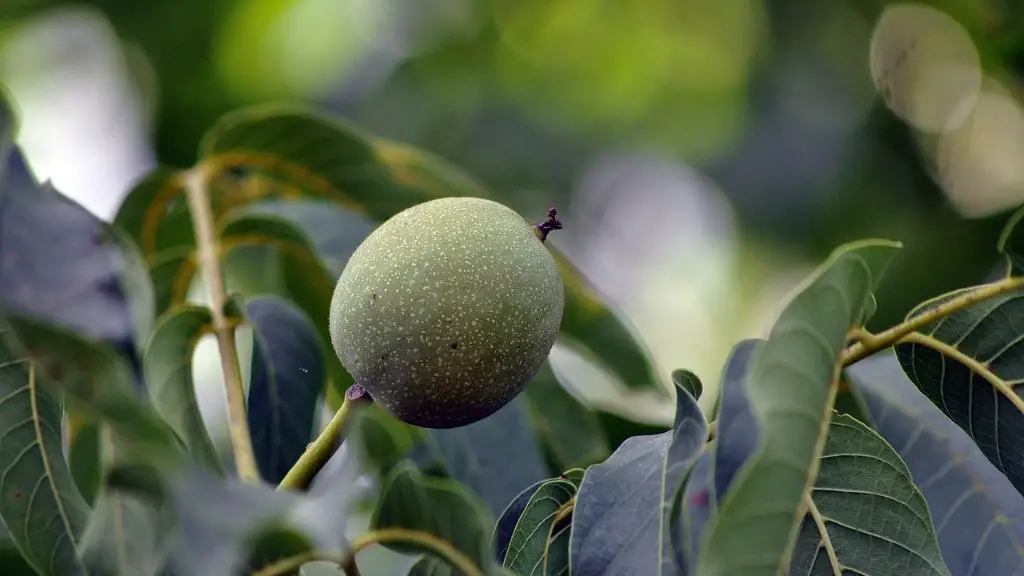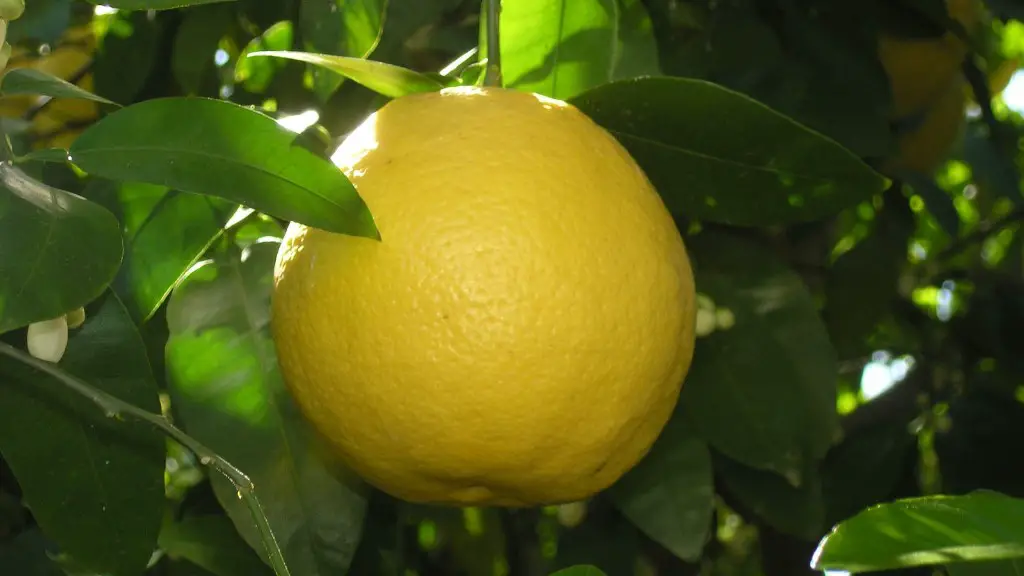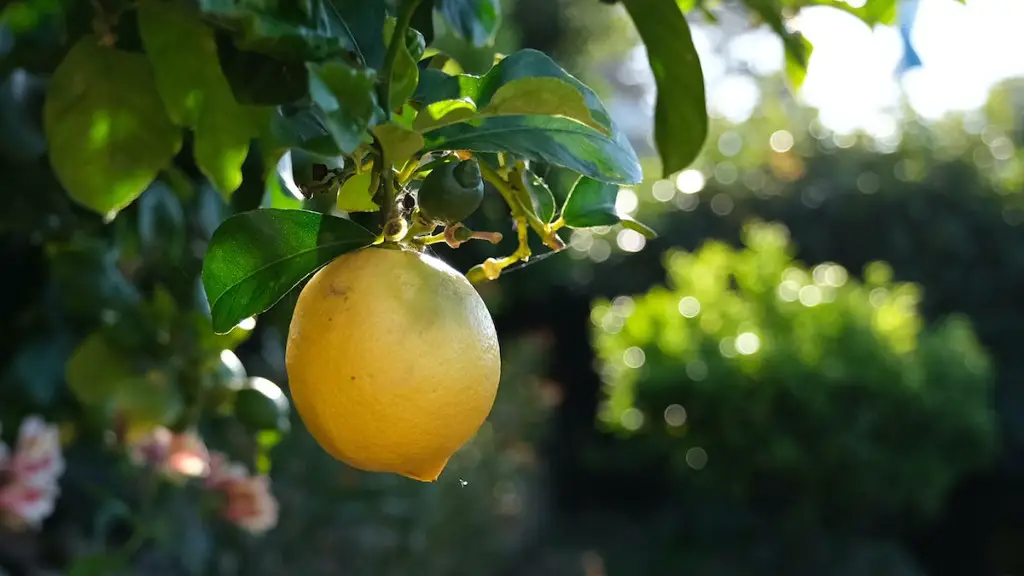Apple trees can produce delicious fruits, but when do they start bearing them? It’s a good question that gardeners and apple tree owners should understand to be successful. Apple trees typically bear fruit 2–3 years after they’re planted. However, this time frame can vary depending on the age of the tree, the type of tree, and the time of year it was planted.
To decide when an apple tree will produce fruits, one must first select the right tree suited to their climate and soil conditions. Apple trees are generally very hardy and require little maintenance. In late fall or early winter, when temperatures are lower and the tree is dormant, the tree should be planted. Young apple trees will often begin flowering and forming fruits within 3-4 years after planting, however, it can take 7-8 years for a mature tree to reach its full production level.
Apples need both chilling time and heat to produce fruit. Different types of trees have different chilling time requirements. Warm-weather varieties need fewer hours of cold temperatures compared to cold-weather varieties. In climates where there’s insufficient chilling, apple trees may not produce fruits. In addition, apple trees require regular water and nutrient levels to be met for fruits to form. If these resources aren’t provided to the tree, it won’t produce fruits.
Apple trees also need to be pruned each year to maintain optimal fruit production. Pruning helps maximize the growth and production of fruits by removing overcrowded branches, regulating the vigor of the tree, and improving air circulation. Branches that are too crowded can affect the production and quality of fruits. Properly pruned trees are essential for optimal yields.
Finally, an apple tree needs to be professionally pollinated in order to produce fruits. Without pollination, apple trees will not set fruit. Apple trees are not self-fertile, meaning that they require a second variety of compatible apple tree to be present. Otherwise, they are unable to pollinate one another and do not produce fruits.
Age of the Apple Tree
The age of the apple tree is one of the determining factors on when it will produce fruits. Young apple trees, typically those 2-3 years old, are the quickest to produce fruit. However, trees that have reached maturity can take up to 8 years before they reach their full production capability. Trees that were grown using a grafting technique, such as a dwarf tree, will generally bear fruits sooner than trees grown from a seed.
Additionally, the age of the apple tree also dictates how much fruit it will produce. Generally, younger trees will yield less fruit than a mature tree. Additionally, mature trees that have been pruned properly often yield more plentiful and robust fruits. Therefore, tree owners should understand the age of their tree to determine when the apples will begin forming.
The age of the tree is also important to determine when fruits might be harvested. Apple trees typically begin producing fruits at the end of the spring or the beginning of summer. However, mature trees may not produce until the late summer or early fall. Therefore, understanding the tree’s age will also help determine when to expect the fruits to be available.
Climate and Soil Conditions
The climate and soil conditions of the apple tree’s environment are also key factors in determining when it will produce fruits. Different apple varieties have varying requirements for cold temperatures, known as the chilling requirement, which must be met in order for the tree to reach budbreak, flowering, and fruit set. Trees planted in climates where there are not enough cold hours will not be able to produce fruits.
Soil conditions are also essential for fruits to form. Apple trees require an adequate amount of nutrients, water, and air for the tree to reach full production. If any of these essential elements are missing, the tree will likely not produce fruits. Additionally, soil quality can also influence the size, taste, and texture of the fruits.
For optimal yields, the soil must be enriched with organic matter prior to planting the apple tree. Additionally, the pH of the soil should be slightly acidic, between 6.0 and 7.0, as apple trees struggle in soil that is too alkaline. If all of these environmental factors, such as soil quality, temperature and water, are met, the tree should produce plentiful fruits within several years.
Pruning Practices
Pruning appropriately is an important part of ensuring the apple tree produces fruit in a given year. Pruning is essentially a gardening technique that removes unwanted or overcrowded branches in order to focus the tree’s resources on ripening fruits. Pruning regularly also helps increase air circulation and ensures the fruits get enough sun.
Pruning is generally necessary for trees that were planted 3 years ago or more. It’s recommended to start pruning during late winter or early spring when the tree is still dormant. Pruning can be done in different ways, such as thinning out branches or removing the side branches to open up the main branches. Different pruning techniques can be used depending on the size and shape of the tree.
To ensure the best results for optimal fruit production, pruning should be done every year. Regular pruning helps reduce the number of future problems with the tree, such as overcrowding or water damage. Additionally, any trees with dead branches should have them pruned out as they can damage the quality of the fruits over time.
Pollination
While pruning and controlling the tree’s environment are important for fruit production, pollination is also needed for successful fruit formation. Apple trees are not self-fertile, meaning that they require a different apple tree variety for pollination in order for fruit to form. This second variety can be planted nearby or already established in the area.
Apples should be pollinated during the spring when temperatures are between 65–85F and not windy. If temperatures are cold or windy during this time, the flowers may not be able to open, resulting in no pollination. To ensure pollination, bee hives or hand pollination can be done. Additionally, careful pruning of flowers early on will help the tree focus its energy on the pollinated flowers.
Cross-pollination is one of the most important factors for successful apple tree production. Without pollination, fruits will not form. Therefore, it is essential for owners to understand the pollination requirements for their tree type so the necessary steps can be taken to ensure the apples yield plentiful fruits.
Harvest Success
Once the tree is of an adequate age, has a suitable climate and soil environment, has been pruned correctly, and has been pollinated, the apples should begin to form. The exact time these fruits will be ready to harvest depend on the variety and ideal picking time. Generally, apples are ready to be picked in late summer or early fall and should be ripe, firm, and free from blemishes. However, some tree varieties have different peak harvest times, such as early season or late season apples.
To ensure the best quality fruits, apple consumers should pick the fruits at their peak ripeness. Harvesting too early can lead to underripe and sour apples, while harvesting too late may cause the fruits to be overripe and off-colored. Additionally, regular and careful monitoring of the trees is important to determine the quality and yields of the fruits as they grow.
Apple trees can produce delicious fruits if their environment and care is properly managed. As long as their age, their chilling requirements, soil and nutrient conditions, pruning practices, and pollination needs are met, the tree should produce fruits within the coming years. By understanding when an apple tree will produce fruits and the proper way to take care of it, owners will be able to get the most out of their tree.





